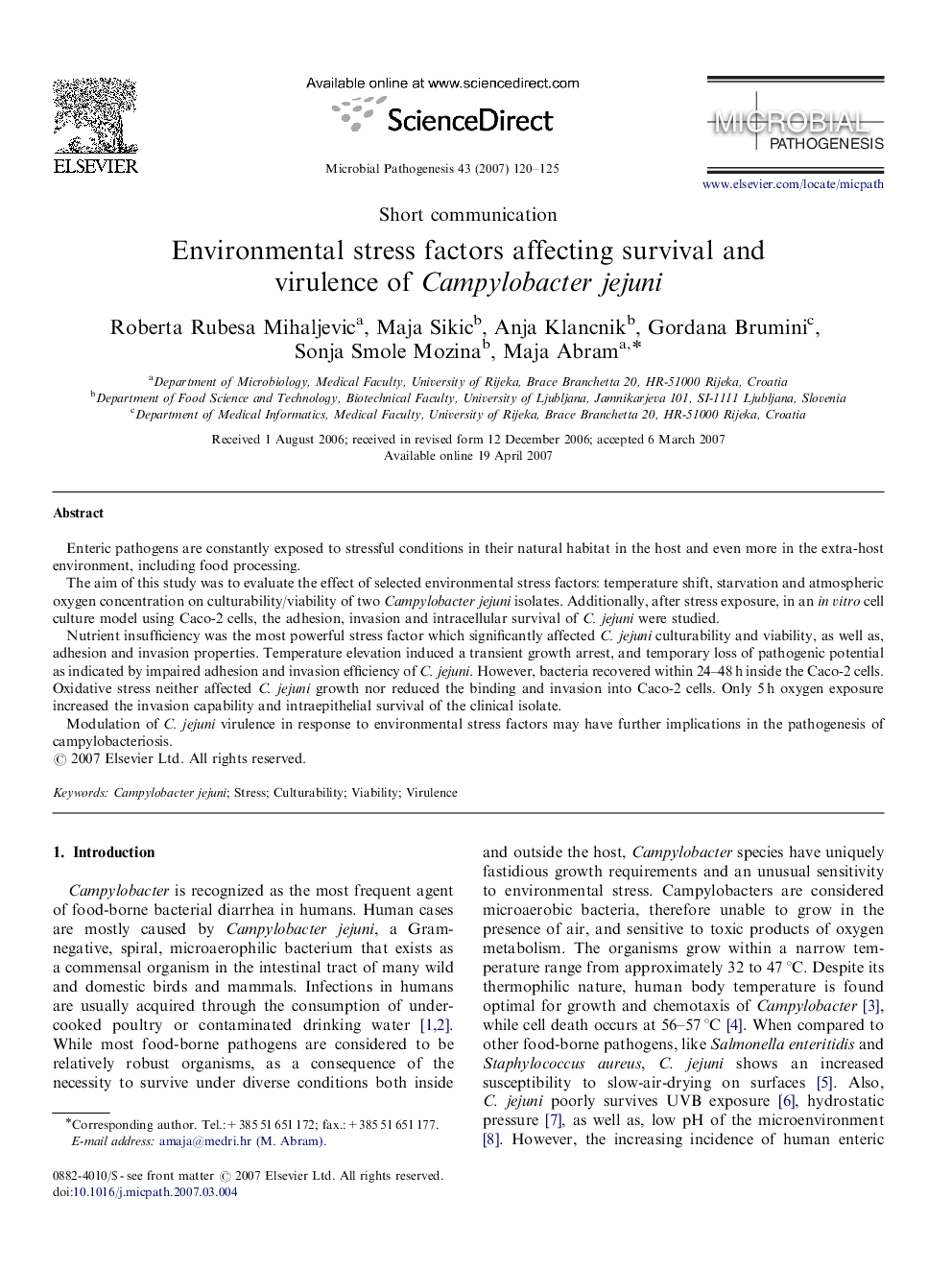| Article ID | Journal | Published Year | Pages | File Type |
|---|---|---|---|---|
| 3417293 | Microbial Pathogenesis | 2007 | 6 Pages |
Enteric pathogens are constantly exposed to stressful conditions in their natural habitat in the host and even more in the extra-host environment, including food processing.The aim of this study was to evaluate the effect of selected environmental stress factors: temperature shift, starvation and atmospheric oxygen concentration on culturability/viability of two Campylobacter jejuni isolates. Additionally, after stress exposure, in an in vitro cell culture model using Caco-2 cells, the adhesion, invasion and intracellular survival of C. jejuni were studied.Nutrient insufficiency was the most powerful stress factor which significantly affected C. jejuni culturability and viability, as well as, adhesion and invasion properties. Temperature elevation induced a transient growth arrest, and temporary loss of pathogenic potential as indicated by impaired adhesion and invasion efficiency of C. jejuni. However, bacteria recovered within 24–48 h inside the Caco-2 cells. Oxidative stress neither affected C. jejuni growth nor reduced the binding and invasion into Caco-2 cells. Only 5 h oxygen exposure increased the invasion capability and intraepithelial survival of the clinical isolate.Modulation of C. jejuni virulence in response to environmental stress factors may have further implications in the pathogenesis of campylobacteriosis.
